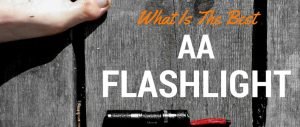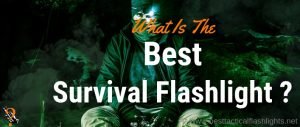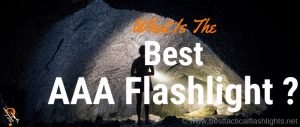Popular Articles
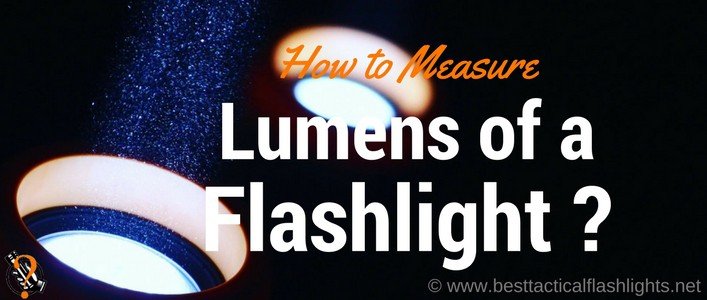
Wondering if it is really that bright? You need to know How To Measure Lumens for yourself.
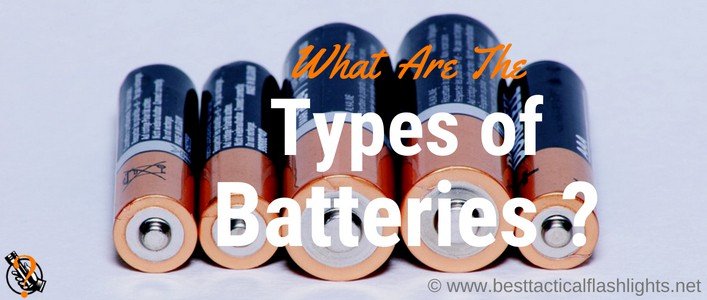
Flashlights need batteries… What Types Of Batteries should you be using in your lights?
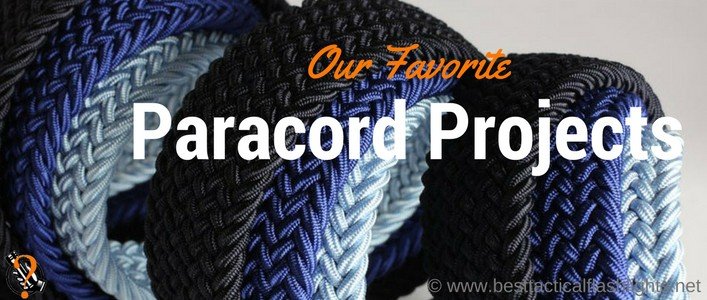
You can do so much with Paracord. Check out our favorite Paracord Projects.

How does EDC work on a plane? Can you take a flashlight on a plane? TSA EDC Guidelines.
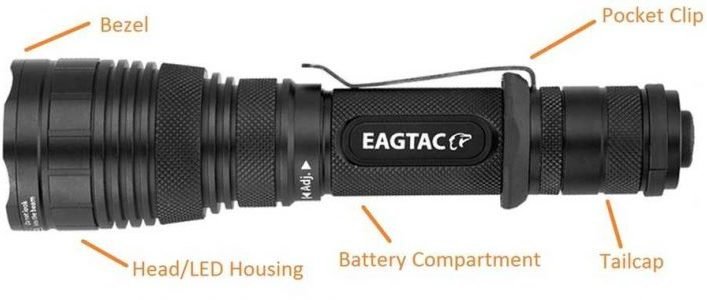
Cover all of the Parts of a Flashlight. From head to tail and everything in between.
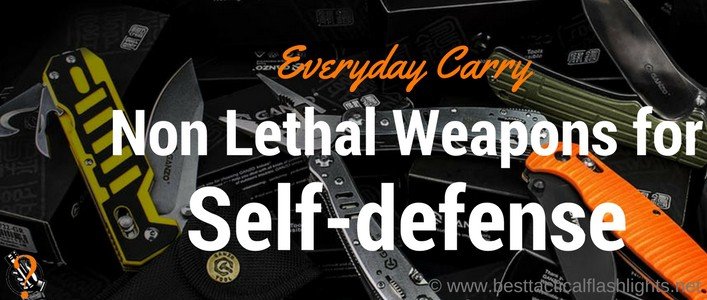
A flashlight is a great Non Lethal Weapon for Self-Defense. Check out all of the others we found.
Popular Buyers Guides
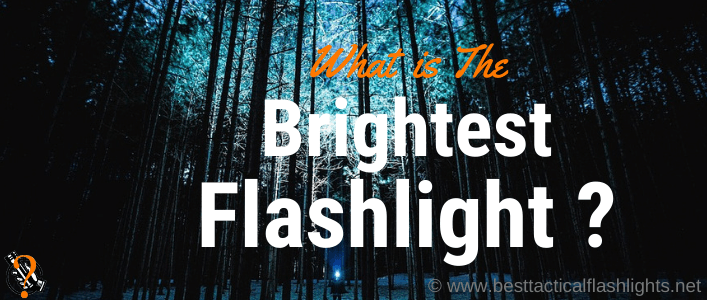
The Brightest Flashlight is always changing. We organized the most powerful flashlights available by battery and budget.
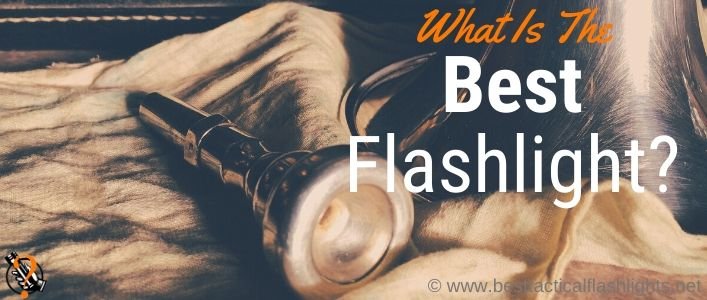
The Best Flashlight for you is different for someone else. We have over 25 guides to find the right one.
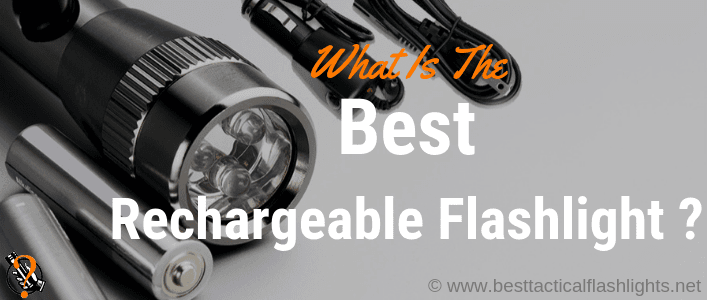
The Best Rechargeable Flashlight has a great internal charger and a great user interface. No more charging batteries.
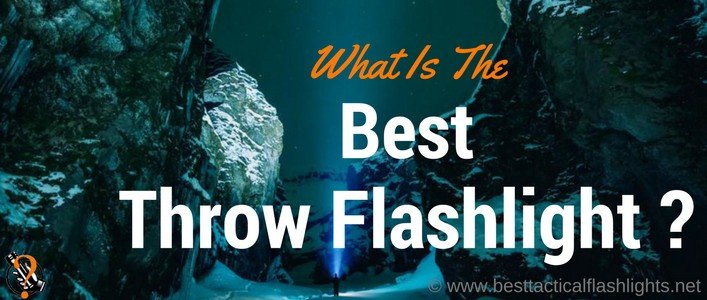
Want a long range flashlight? In our Best Throw Flashlight guide We organized by these by battery and budget.
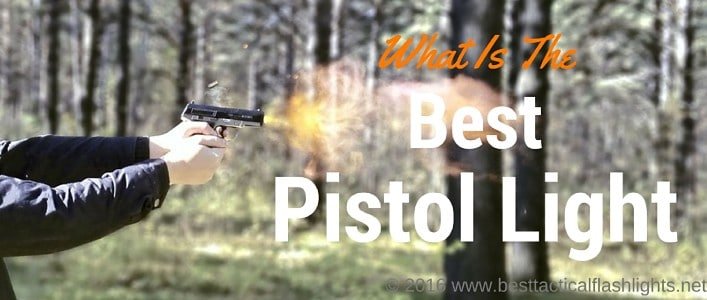
Don’t shoot in the dark. The Best Pistol Light depends on what you want to do. From budget to laser combos.
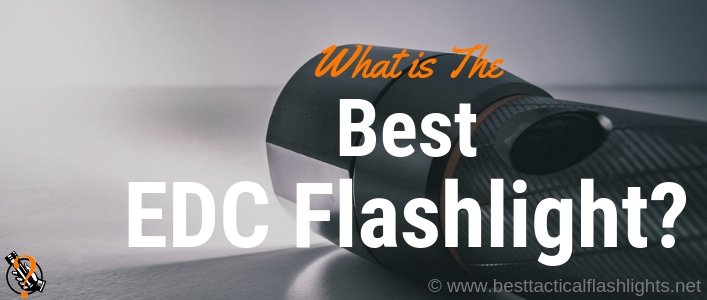
Carry the Best EDC Flashlight with you. A flashlight is one of the best things carry everyday. Arranged by size and budget.
Flashlights 101 – Introductory Course
So, you are thinking “I need a flashlight!” If you are seriously shopping for a flashlight before you start looking at reviews and comparison guides it might be good to be educated about flashlights. check out this really great video that outlines the key parts of a flashlight. Then we will go into a checklist of options and considerations that you need to make in order to find the flashlight that will best fit your needs. Please take the time to download and print our free flashlight buyer guide checklist so you can follow along. This guide was specially designed to help you make your decisions.
What is your budget?
There are handheld and mountable flashlights that range in price from $10-$500. You need to first decide on how much money you want to spend. In most cases you get what you pay for with flashlights. If you are looking for a penlight or a keychain flashlight you can find decent quality under $25 dollars but the majority of the other torches will require you spend a little more to get the quality you are looking for.
In our comparison guides you can filter or sort by cost ($)
$ means less than $40
$$ means $40 – $80
$$$ means $80 – $120
$$$$ means $120 – $160
$$$$$ means more than $160
What Type of Flashlight Do You Want?
There are three main types of flashlights. Each type of flashlight is made for a specific purpose and way to carry. There are the standard handheld flashlights, headlamps, weapon lights. Some manufacturers make adapters that can change one type of light into another to increase the value of their products.
Handheld Flashlight: These are the flashlights that we all think about when we think of flashlights.
Headlamp: Headlamps are light that you wear over your head that allow you to be hands free. For things like camping an hiking these flashlight are ideal. It is much easier to use the restroom in the middle of the night with a headlamp on as opposed to a handheld light, and you really wouldn’t want to use a weapon light for this.
Weapon Lights: This other type of flashlight is specifically designed to be mounted to a pistol or a long gun. An example of a dedicated weapon light is the Surefire X300 Ultra. The two main types of mounting rails are the Weaver rail and the Picatinny rail. The Picatinny rail is the new of the two standards and typically Weaver accessories will fit on a Picatinny rail but not vice-versa. The other type of mounts that are used for shotguns and rifles without a rail system simply squeeze around both the barrel and the flashlight by tightening a screw.
Hybrid/Mount Adapter: A few handheld flashlight manufacturers like Nitecore blur the lines between these two formats by making mounting adapters that perfectly fit their handheld lights.
Just like any product, dedicated weapon lights fulfill the job a better than handhelds matched with an adapter but they are also single task devices. You might want the flexibility of a flashlight that can serve both purposes. One thing that I would stay away from are none manufacturer mounting adapters or general purpose mounting adapters that claim to work with all flashlights. With all of the stress and movement that happens with guns you want something that fits completely flush and has no wiggle room.
Parts of a Flashlight
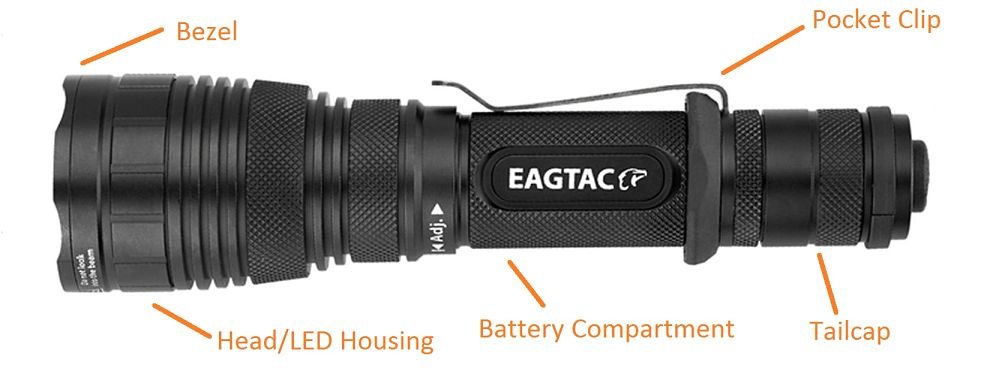
ANSI FL1 Standards
Up until recently there has not been any kind of standard in the flashlight industry, the ANSI FL1 standards even the playing field for all torch producers. Learning how to read the standards sheets put out by most manufacturers is important to help you find the best flashlight.

Light Output: This is a Lumens rating that shows the total amount of light that comes out of the front of the flashlight.

Run Time: This is the amount of time it will take for light to get to 10% of its initial output. An example would be that if a flashlight started at 100 Lumens this is the length of time of continuous light that it would take to get down to 10 Lumens.

Beam Distance: This is the measurement in meters of the distance at which the intensity of the beam reaches 0.25 lux which is the approximated amount of light of a full moon on a clear night.

Peak Beam Intensity: Measured in Candela this is the brightest point in the beam. Where Lumens tell how much light is coming out of the light in total Candela measures how bright the brightest point of the beam is.

Impact Resistance: Measured in meters this indicates the height that you could drop a flashlight from onto concrete and it still work properly. The light can also not have any cracks or breaks in it.

Water Resistance: There are three levels of water resistance that are found, those are IPX4, IPX7, and IPX8.
IPX4: A flashlight with this rating has been tested to perform under the condition of splashing water.
IPX7: A flashlight with this rating has been tested to perform submerged to 1 meter for 30 minutes.
IPX8: A flashlight with this rating has been tested to perform submerged deeper than 1 meter for up to 4 hours.
What Kind Of Light & How Much Do You Need?
Currently on this site we only cover flashlights that use LED bulbs. As we expand we will have incandescent options. Incandescent bulbs are both replaceable and give off better color but currently most manufacturers are making new flashlights with LEDs due to their lifespan and the fact that they are mostly shock proof.
Light Color Temperature: By what kind of light we are talking about the color of light, some manufacturers give options for slight tints in the lights that they sell. Scientifically this is called the color temperature of the light which is measured in Kelvin. The lower spectrum of 2600 K to 3500 K has a “warm white” color (light yellow tint) like what would be found in an incandescent light bulb. Between 3500 K and 5000 K we call “neutral white” since neither yellow or blue dominate the color of the light. The higher range 5000+ K is “cool white” and they have a much whiter appearance and may have a slight bluish tint. The majority of flashlight producers make use cool white LEDs since they are more efficient light producers, to produce the yellowish warm tint the LEDs are covered with yellow phosphor which means that light is blocked and therefore not as many Lumens can be produced with the same amount of power. If you want a LED flashlight with a warmer tint you are going to have to do a little searching for it.
There Are Three Ways To Look At How Much Light…
Lumens are how we measure luminous flux which is the amount of light energy or power of the light in total that comes out of the face of the flashlight. High Lumens means that you have a powerful LED and a powerful battery. Flashlight producers like throwing the word Lumen around everywhere but it is not really as useful of a measure of light as Candela or Beam Distance for how the flashlight will perform. The most powerful flashlights have really high lumens but it is dependent on the reflector on whether the light will shine a long distance or if it will light up the area close to the light.
Candela is the peak beam intensity or in other words the brightest point of light produced. Without changing the amount of Lumens the Candela can change dramatically since they are dependent on the beam angle which is controlled greatly by the reflector. The smaller the beam angle the greater the peak brightness with be (Candela). So you could have flashlight with a much less powerful LED producing a higher beam intensity and having a longer beam distance because it has a smaller beam angle.
As mentioned earlier when we described the ANSI FL1 standards Beam Distance is the distance in meters that a light can go until it reaches 0.25 lux which is the amount of light output by the full moon on a clear night. Just like Peak Beam Intensity/Candela the Beam Distance is very dependent on both the type of LED used and also the reflector. Flashlights can be designed to throw a long beam like a spot light or to light up a whole area like a light bulb in your house. Later we will talk about throw vs flood.
With all of that said, we will play by the manufacturers rules and decide how much light we need by Lumens. But, now that you are educated you can take the other ANSI measurements into account while searching for a flashlight.
1 – 14 Lumens: Any kind of flashlight will do, you mainly just need a small light to get around dark rooms. Something to help you find your way to the restroom in the middle of the night or help you read a map. This level of light will not completely destroy your night vision.
15 – 59 Lumens: This is enough light to completely illuminate a room in the event of a power outage but it is not enough to see very far outdoors. This is also not enough to temporarily blind a would be attacker but still enough to mess up your own night vision.
60 – 149 Lumens: Now we are getting to enough light to see outdoors. This is the level of light you would want if you were going for a walk at night through your neighborhood. There are conflicting numbers but in the dark above 100 Lumens should produce temporary blindness, you will need higher Lumens if you are in a more well lit place.
150 – 299 Lumens: With this level of light output you could easily light up a large room, your entire backyard and be able to see pretty far out of a campsite. At 150 Lumens you will be able to cause temporary blindness even in a well lit place at night and at close to 300 Lumens you would be able to cause temporary blindness in an indoor daylight situation.
300 – 699 Lumens: These are some serious Lumens. Most small flashlight require a burst mode to reach these high of lumens. You will typically only get into these lumen levels with specialty batteries. You could come close to lighting up an entire football field and would have no problem illuminating a campground.
700+ Lumens: This is getting really serious. This is the level of power you want if you need maximum brightness for your job but still need a small handheld light. Search and rescue teams or people that just want to show off get these kinds of lumens. There are handheld flashlights that go up to 7000+ Lumens these insane flashlights can make a tree 3-4 football fields away as bright as a christmas tree. Looking for crazy bright? Check out our Brightest Flashlights Buyers Guide.
What Size Flashlight Do You Want?
Carefully consider how big of a flashlight you want depending on what you plan on doing with it. Remember, if this is for everyday carry you need a torch that will not get in the way. Finding a balance of size and power is for your needs is key. If you are unsure about size download our free flashlight buyers guide checklist that has a size chart for both length and bezel diameter.
Micro Flashlight: A micro light is under 2 inches, they are the small keychain flashlights that usually use button cell batteries. There are a few super small serious flashlight that run on a single CR2 or CR123A battery that manage to be under 2 inches in length but not many.
Mini Flashlight: We will say that a mini flashlight is under 3 inches in length. From 2 inches to 3 inches you open a whole world of single battery flashlights including the standard AA and AAA sizes. There are flashlights that are this size that manage to put out 252 Lumens on burst mode with a single CR123A battery. Flashlights that are less than 3 inches are difficult to use as a striking tool since most peoples hands will completely cover the flashlight.
Small Flashlight: A small flashlight is under 4 inches in length. Between 3 and 4 inches you can not really fit in a second battery but you are able to have single battery flashlights with more features. In this size you will find more options with tail switches and the lights can have a deeper reflector so they can throw their light farther. Also, at 4 inches these flashlights will be able to be used as a striking tool.
Medium Flashlight: A medium flashlight will be between 4 and 6 inches. In this range we have my lights that run on two batteries and you also start getting flashlights that use 18500 and 18650 specialty batteries. With the the availability of more power because of size these lights will have the top end LED bulbs that can put out very high Lumens. Again, with this size you also increase your ability to use your flashlight as a self-defense tool.
Large Flashlights: Here we will consider anything over 6 inches that still has a small diameter bezel and can be held in a holster. Police usually buy flashlights in this size range since they can be used as a club and are definitely an extra weapon. Like the previous section these flashlights can output huge amounts of Lumens but with the extra added size these flashlights may have a few more features than the slightly smaller lights.
What Kind of Power Source Do You Want?
We all want to help the world be a cleaner place and we like the idea of rechargeable batteries, but there are many scenarios where disposable easy to find batteries are the best option.
Disposable Alkaline: These are the standard size batteries that you are used to seeing AAA, AA, C, and D batteries. These batteries do not offer as much power as some other types of batteries but they are very easy to find. Often people in the prepper/survival industry like flashlight that will work on standard size batteries so they know that they will have access to the batteries. Alkaline batteries have a shelf life of around 2 years.
Disposable Lithium: Do not confuse these batteries with Lithium Ion batteries! These batteries are in almost every way the same as alkaline batteries except they have more power, can store more energy and are lighter. Lithium batteries have a shelf life of around 10 years so they are a favorite of survivalists. On the flipside they are quite a bit more expensive than alkaline batteries. Some specialized batteries that fit in this group are the CR123A and the CR2 which are often used in flashlights.
Rechargeable Cells: Rechargeable Li-Ion cell batteries come in many different sizes. Some specialized sizes that are often used in flashlights are 18500, 18650, and RCR123A. They offer great power output and the ability to recharge. The downside is that the batteries are expensive and you need to buy a nice charger to go along with them so you do not destroy them.
Integrated Rechargeable Pack: Lastly you can find flashlights that have specially designed battery pack that is made just for that flashlight. sometimes these are removeable or sometimes you plug the whole flashlight into the wall. Often times these offer great benefits but if you run out of juice you need to wait awhile to charge back up.
Flood Vs. Throw

These are two terms that you will hear about all of the time if you do much research in flashlights. A flashlight the has a lot of flood will illuminate a very large area but not very far. There will not be a defined beam but on overall brightness in the whole area. Torches that have a long throw have a very definite beam and you can light up something many yards away. Different lights are designed to be more floody or throwy, it is dependent on the design of the reflector and on the LED that is used. In general flashlights that are floody are better for close up activities and flashlights that have a long throw are for lighting up thing that are far away. You need to decide how far away you want to be able to see something and this will change the flashlight that you will want to buy.
What Kind Of Battery Life (Run-time) Do You Need?
Do you need a flashlight that will be able to be on max brightness for 30 minutes and then be done, very bright for a short amount of time. Or, Do you need a flashlight that will stay very bright for 3-4 hours? Many small flashlights can produce huge Lumens but they do not have enough battery to keep it going for very long. Knowing how long you need your flashlight to last for is very important. If you need a flashlight that can be bright for hours on end you are going to need a larger flashlight that can hold the batteries to support you.
What Kind Of Switch Type Do You Want?
Flashlights come in three main switch types. They are the head/tail twist switch, the body switch, and the tail switch.
Head/Tail Twist: This type of switch is very common on super small flashlights since it does not take any more space to develop a flashlight that changes its electrical contacts based on how much the head or tail is screwed on. Many people do not like these switches because they find that the head or tail sometimes comes completely unscrewed.
Body: The body switch was the most popular style and is like what you would find on a Mag-lite. It allows certain types of grip that you would not be able to do with the other two types of switches.
Tail: The tail switch is the most popular and usually the favorite type of switch for a tactical flashlight. Having the button on the bottom of the torch allows an overhand grip that is already in a fist position, which allows for better self defense with easy flashlight usage. Also, our most preferred method of using a flashlight with a gun really is much easier with a tail switch.
How Many Brightness Levels Do You Want?
Every person wants something different out of their flashlight and every flashlight manufacturer has their own idea of what the best way to provide light is.
On/Off: There are no modes or brightness levels, just full power. Many flashlights that are designed for combat and self defense use actually prefer this because when you push that button you know exactly what is going to come out. Some people feel that all of brightness levels and modes can confuse and just get in the way.
Two Brightness Levels: High and Low, these lights do not offer anything fancy except the ability to have a long battery life on a low setting aside from just having max power all of the time.
Many Brightness Levels: There are flashlights that have up to 10 different brightness levels and some even with dials that support continuous change. Obviously the brighter the light the lower the run-time so having just enough light for what you are doing is a huge benefit. Rather than having not enough or having too much and having your flashlight die out very quickly.
Do You Want Any Special Light Modes?
There are three special light modes that a flashlight come with. They are Strobe, SOS, and Beacon.
Strobe: Strobe is designed to disorient somebody, it is a very fast and super bright blinking light that is usually in a changing pattern to really confuse people. This is a feature that many police officers would consider a necessity.
SOS: SOS or —…— in Morse code is used for emergency purposes. It is originally a naval term for save our ship. This would be useful for anybody that was out camping or stuck in a survival situation.
Beacon: A beacon is like a lighthouse, it blinks at full brightness every few seconds. The purpose of this mode is for survival. You would use this when you want to get seen. Blinking every few seconds conserves battery life as long as possible.
What Do You Want Your Flashlight To Be Made Out Of?
The material that flashlights are made of has is important to the durability and the weight of the flashlight. The following are the most commonly used materials.
Plastics or Composites: There are not that many high quality flashlights for sale that use plastics or composites but one company that is making good composite flashlights is pelican.
Anodized Aluminum: This is the material that most flashlight manufacturers are using in flashlights today. You want to make sure that you have at least type II anodizing but Type III (hard anodized) is better.
Stainless Steel: Stainless steel is a very strong and durable material but it is heavy.
Titanium: Titanium is kinda the best of both worlds, very strong like stainless steel and pretty light. The downside to titanium is the cost.
Do You Need Water Resistance?
You may of may not think that you need water resistance. I suggest at least getting IPX7 water resistant lights as you do not want you flashlight to stop working in the event of an accident.
IPX4: This basically means that the flashlight is splash resistant. This should not be submerged in water or it will probably get in.
IPX7: This is submersible but only to 1 meter for up to 30 minutes according to the specification.
IPX8: This is the highest level of waterproofing that you will see in most flashlights, it is submersible to more than 1 meter for up to 4 hours.
Do You Have Any Special Needs For Your Flashlight?
You can find flashlights these days with all sorts of extra modifications for sale that fit particular needs. Take a look at some of the more common features that manufacturers offer to see if any of these might be useful to you.
- Light Filters
- Dedicated RGB LED’s
- Pocket/Belt Clip
- Holster
- Lanyard
- Strike Bezel
- Mounting Bracket
- Pressure Switch
- Headlamp Adapter
- Knurling
- Made In USA
Light Filters
Some flashlights come with light filters that you can put over the top of the flashlight so it will shine another color. Red is popular for night vision, blue and yellow are popular for seeing blood, and green does not spook animals while hunting and can not be seen from the side so you can preserve your location.
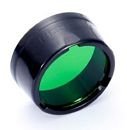
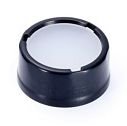
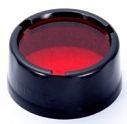
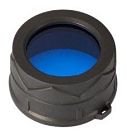
Dedicated RGB LEDs
You would use red, blue, and green led flashlights for the same reason as above but for some reason you might want them built into the flashlight. Having the built in LEDs makes it so you do not need to search for filters all of the time, but you will not be able to get the same level of brightness as you would in a light with a filter.

Pocket/Belt Clip
The reason for this is obvious. You want to hold the flashlight on you pocket or belt. Some flashlights have much better pocket clips than others. For instance this Sunwayman Mr. Elfin M11R has a very deep pocket clip to ensure that the flashlight does not go anywhere.
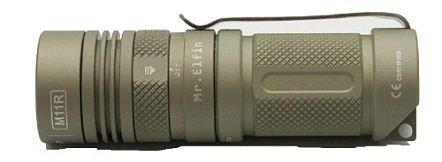
Holster
Some people like to carry flashlights is a separate holder on their belt, and some flashlights are too big to fit in a pocket. For this reason there are flashlights that come with holsters. Most flashlight holsters have a belt loop and then a Velcro flap that goes over the head of the flashlight.

Lanyard
Do you want to hang this thing off of you neck or wrist? Size and weight are important for this one. Some flashlights have an option to connect to a lanyard so you always know that it is hanging around your neck. This is a useful feature for hikers and other times when you want to be hands free.
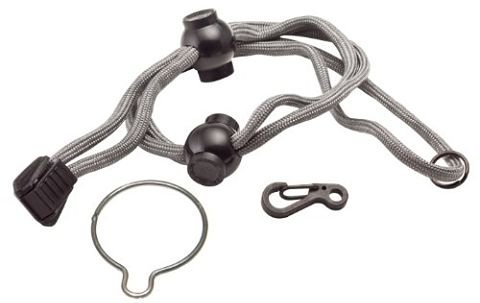
Strike Bezel
Some flashlights have jagged bezels that are designed to hurt somebody when you hit them. There are a few that actually come with these built in but many companies offer crenulated bezels as an add-on. Most of them are advertised as a way to break windows in the event of an emergency but I wouldn’t want to hit a window too hard with a flashlight. If you have one of these on your flashlight you need to be aware that some law enforcement or the airport security might consider it a weapon.
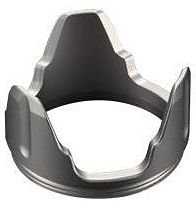
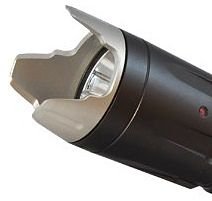
Mounting Bracket
Do you need to put your light on a gun, some lights are dedicated gun lights and some handheld flashlights have adapters that will attach them to a gun. A light the is meant designed to go on a gun will fit more secure and have less movement, but having an adapter for a handheld light is both more versatile and cheaper.

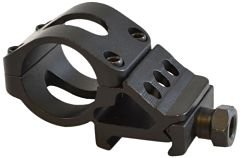
Pressure Switch
If you want to mount your flashlights to a weapon some lights offer different types of switches. Many manufacturers offer pressure switches that replace the tail switch of a flashlight with a pressure pad so you can move the on/off button to almost anywhere else on the gun. These are particularly useful for long weapons so you can put a switch right next to where you would comfortably keep your hands as opposed to feeling around for the button on the flashlight.

Headlamp Adapter
You can buy a stand alone headlamp or some of the smaller handheld torches come with headlamp adapters. Zebralight and Foursevens are two companies that a constantly thinking outside of the box and creating products like this. Just as with the mounted lights for weapons having an adapter option adds versatility and is cost effective.
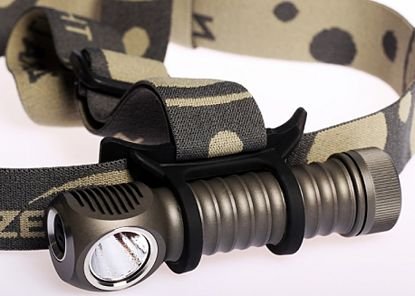
Knurling
Do you want the surface of the flashlight to be knurled for extra grip or do you want it to be smooth. Knurling is when a pattern is put into the metal surface of the flashlight. Many people like the knurling in the metal but some do not and prefer smoother ergonomic features to increase grip.

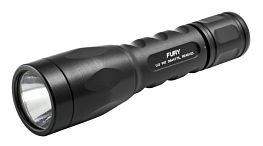
Made In The USA
Do you care if your flashlight is made in the USA? Some manufacturers are 100% china made and it runs the whole percentage scale all of the way to 100% made in the USA.
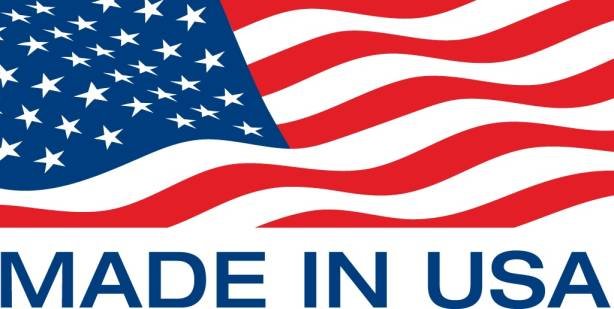
You Got Through! Have Any Question?
If you made it this far, wow! Anyway, we hope that you learned something through this article and that it will help you decide what the best flashlight is going to be for you. If we helped you at all, you liked the free checklist, or you just enjoyed the read please give us some social love via facebook, pinterest, tumblr, twitter, etc…. We Appreciate It! Also, we make all of the money to support this site from affiliating with amazon and other retailers, so if you are really shopping for a flashlight please go though one of our links to get to a store where you can buy a light. As an affilate we get a small commission for sending you but there is no extra charge to you. From here I recommend reading through our best of articles and checking out our massive flashlight comparison table that allows you to filter and sort through all of the different specs. Thanks again
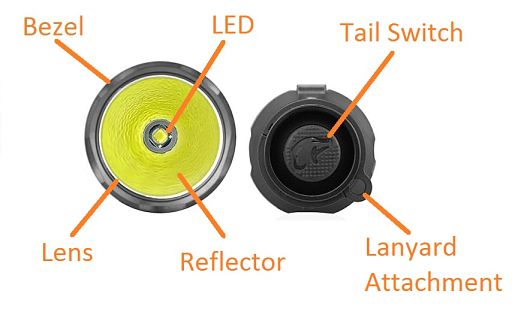

![Easy EDC! 7 Best Keychain Flashlights 2020 [LED Keyring Torch Picks]](https://www.besttacticalflashlights.net/wp-content/uploads/2019/12/Best-Keychain-Flashlights_f7d0b1bf9c41eedbd406c2424f7c9261_2000-300x127.jpg)
![Combat! 19 Best Tactical Flashlights 2025 [Handheld, Headlamp, Weapon]](https://www.besttacticalflashlights.net/wp-content/uploads/2020/02/BestTacticalFlashlight_e975f11e98f87e384ed786aab573f4a5_2000-300x127.png)
![Red, Blue, Green...10 Best Flashlight With Colors 2020 [Multi-Color Too]](https://www.besttacticalflashlights.net/wp-content/uploads/2019/12/BestFlashlightwithColors__8e35bfc91b16d78a50732a2718148c1a_2000-300x127.png)
![EDC! 6 Best Penlights 2020 [Rechargeable to Brightest Tactical]](https://www.besttacticalflashlights.net/wp-content/uploads/2019/12/Best-Penlights_4f0d13280952bf667b11d6457acf7e27_2000-300x127.jpg)
![Li-Ion Power! 24 Best 18650 Flashlights 2025 [Single To Multiple, Hi-CRI To Headlamps]](https://www.besttacticalflashlights.net/wp-content/uploads/2019/10/Best18650Flashlights2019_1f061cb3c86cfde29bce1a9168bd973d_2000-300x127.png)
